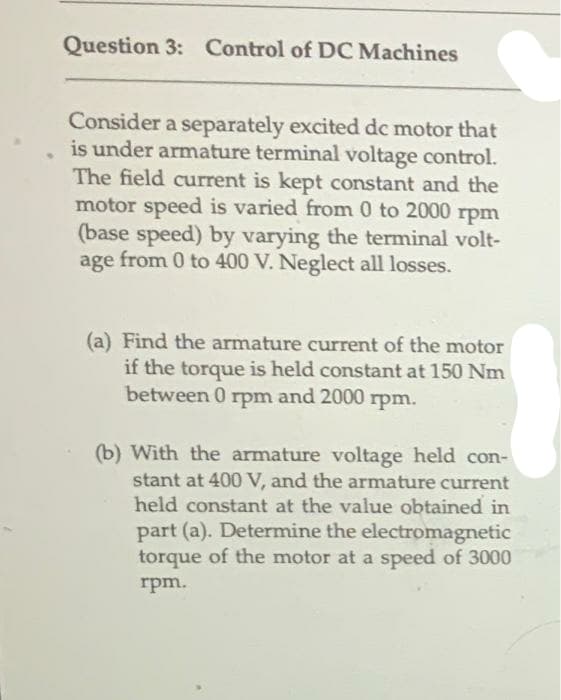Question 3: Control of DC Machines Consider a separately excited de motor that is under armature terminal voltage control. The field current is kept constant and the motor speed is varied from 0 to 2000 rpm (base speed) by varying the terminal volt- age from 0 to 400 V. Neglect all losses. (a) Find the armature current of the motor if the torque is held constant at 150 Nm between 0 rpm and 2000 rpm. (b) With the armature voltage held con- stant at 400 V, and the armature current held constant at the value obtained in part (a). Determine the electromagnetic torque of the motor at a speed of 3000 rpm.
Instructions and Operation
Nowadays, electrical engineers are required to evolve their practices by incorporating embedded processes, microcontrollers, digital signal processors, and so on. These processors are beneficial in many ways and have changed the perspective of electronic design.
Subroutine Instruction
Subroutine instruction is defined as the instructions used in the programming language in a sequence form saved in memory. They are used to doing a specific task. Subroutine instruction is called a unit that instructs to perform some needed task. There are many programming languages in which subroutine instructions are used but have a different identity or name, such as method, function, subprogram, routine, etc. Subroutine or sub-program is designed or coded as they can be called multiple times while executing the program.
Classification of Buses
A bus inside a microprocessor is a collection of wirelines that contain related information. A group of wires required for communication among the microprocessor and peripherals is known as a system bus. A bus is an electrical or digital passage across which bits are transferred between a variety of computer elements. It mainly links all the internal parts to the CPU (Central Processing Unit) and main memory. The width or size of any bus is crucial since it affects the amount of data that is transferred at a certain time period. Buses always transmit data parallelly, in a 32-bit bus, the information is supplied over 32 wirelines simultaneously and each bus comprises a clock speed measurable in MHz. The various types of buses inside a microprocessor are address bus, data bus, and control bus.
Execution of Instruction
A sequence of instructions makes up a program stored in a computer's memory unit. The CPU executes these instructions by going through a cycle for each instruction. The instruction cycle in a simple computer includes the steps listed below:
Please provide Handwritten answer

Step by step
Solved in 2 steps with 2 images









